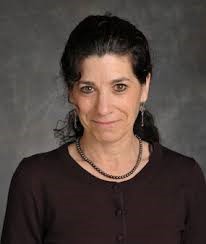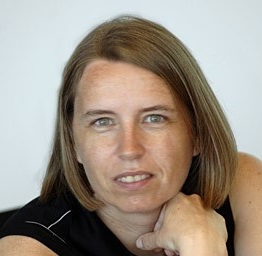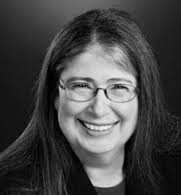We are excited to announce the inaugural list of “10 women in networking/communications that you should know.” Over 150 people around the world submitted nominations for this list, and many of these people submitted several names. These nominations created a very impressive list of approximately 140 women in the networking/communications fields. The women nominated amaze us and inspire us. It was quite hard to only choose 10.
For 2015, in alphabetical order by last name, here are 10 women in networking/communications that you should know!
 | Polina Bayvel Professor of Optical Communications at University College London Polina Bayvel’s research interests include wavelength-routed optical networks, high-speed optical transmission, and the study and mitigation of optical fiber nonlinearities. She is a Fellow of the Royal Academy of Engineering, the Institute of Electrical and Electronics Engineers, and the Optical Society of America. “Polina has a remarkable fingerprint in the optical communication research field. We really appreciate her work.” – Mohamed Elsherif, The University of Nottingham |
 | Deborah Estrin Professor of Computer Science and Professor of Public Health at Cornell Tech – New York City Deborah Estrin develops new personal data APIs and applications for individuals to harvest the small data traces that they generate daily. She previously pioneered the development of mobile and wireless systems to collect and analyze real time data about the physical world and the people who occupy it. In 2003 she was named one of the year’s “Brilliant 10” by Popular Science. She is a Fellow of both ACM and IEEE. “Deborah has been an inspirational leader in the networking community for decades, particularly for her work as director of the Center for Embedded Networked Sensing (CENS). She does deep scientific research with a strong tie to real applications and a commitment to science in service to society.”– David Kotz, Dartmouth College |
 | Anja Feldmann Professor at the Technische Universität Berlin Anja Feldmann’s current research interests include internet measurement, traffic engineering, traffic characterization and network performance debugging. She also works with intrusion detection and network architecture. She has served on more than 50 program committees, including Co-Chair of ACM SIGCOMM and Co-Chair of ACM IMC. “Anja was instrumental in the establishment of a rigorous science of Internet measurement. Among her many contributions, she is perhaps best known for her work in traffic characterization and engineering.” – Alex C. Snoeren, UC San Diego |
 | Sally Floyd Currently retired Sally Floyd is an expert in Internet congestion control and a co-designer of Random Early Decision, which led to the establishing of active queue management. From 2001 to 2005, she sat on the Internet Architecture Board. She has received the IEEE Internet Award, the ACM SIGCOMM Award, and the IEEE Communication Society’s William R. Bennett Prize Paper Award. “It’s difficult to find an RFC or a research paper in the congestion control domain that Sally hasn’t co-authored or that does not build on Sally’s work. She was my role model when I was starting out in research and her meticulous approach to experimentation with TCP continues to be the model that I set for myself and my students. A very deserving woman for the N2Women list!” – Ivan Beschastnikh, The University of British Columbia |
 | Andrea Goldsmith Professor of Engineering at Stanford University Andrea Goldsmith’s research areas include the design and capacity analysis of wireless systems and networks, multiple-antenna wireless networks, cognitive radios, sensor networks, cross-layer wireless network design, and applications of communications and signal processing to health and neuroscience. She is an IEEE Fellow and an Alfred P. Sloan Fellow. “Andrea’s contributions to the foundations of wireless communication are impressive, in particular her contributions to the assessment of capacity limits and to resource management algorithms for wireless communication systems. Practical relevance of her work is confirmed by her acting as co-founder of companies in the wireless communication field.” – Adam Wolisz, Technische Universität Berlin |
 | Muriel Medard Professor of Electrical Engineering and Computer Science at MIT Muriel Medard’s research interests are in the areas of network coding and reliable communications, particularly for optical and wireless networks. She was awarded the 2009 Communication Society and Information Theory Society Joint Paper Award and the 2009 William R. Bennett Prize in the Field of Communications Networking. In 2007 she was named a Gilbreth Lecturer by the National Academy of Engineering. She is a Fellow of the IEEE. “Muriel Medard is arguably the inventor of Random Network Coding, a successful entrepreneur and licensor of her lab’s technology, delightfully visible, helpful and effective in her professional societies. In addition to her typical 15 professional children (12 graduate students and 3 postdocs), Muriel has found time to raise her own four lovely and wonderful-in-their-own rights children.” – Chris Rose, Brown University |
 | Klara Nahrstedt Professor of Computer Science at the University of Illinois Urbana – Champaign Klara Nahrstedt’s research concerns multimedia, quality of service, and middleware. Nahrstedt is a Fellow of the Association for Computing Machinery for contributions to quality-of-service management and distributed multimedia systems. She is also a Fellow of the Institute of Electrical and Electronics Engineers. “Klara Nahrstedt made fundamental contributions to routing and scheduling in networks based on quality-of-service parameters. She also contributed many innovative ideas for multimedia streaming in mobile networks.” – Wolfgang Effelsberg, University of Mannheim |
 | Radia Perlman Employed by EMC Corporation as a Software Designer and Network Engineer Radia Perlman is most well known for her work in network bridges. She also made large contributions to link-state protocols, including TRILL, which she invented to correct some of the shortcomings of spanning-trees. In 2003 she was named Silicon Valley Intellectual Property Law Association Inventor of the year and was recipient of the first Anita Borg Institute Women of Vision Award for Innovation. She also received SIGCOMM’s Lifetime Achievement Award. “Radia Perlman is famous for her seminal and lasting work on the spanning tree protocol for bridges, for her work to improve the security of networks, and for her impactful books on networking and security. She was also elected to the NAE recently, and won the SIGCOMM award, among her many well-deserved honors.” – Hari Balakrishnan, Massachusetts Institute of Technology |
 | Jennifer Rexford Professor of Engineering at Princeton University Jennifer Rexford won the ACM Grace Murray Hopper Award for her work on the Border Gateway Protocol showing how to perform network routing subject to the different business interests of the operators of different subnetworks. She is a Fellow of the ACM, a Fellow of the American Academy of Arts and Sciences and a member of the National Academy of Engineering. “Jennifer Rexford followed a successful stint in industrial research at AT&T with an even more successful on-going career at Princeton. Her research and leadership in the software defined networking area is unquestionably top notch, and she cares about mentoring. Jen is a woman in networking that everyone should know.” – Ellen Zegura, Georgia Institute of Technology |
 | Lixia Zhang Professor of Computer Science at the University of California, Los Angeles Lixia Zhang’s expertise is in computer networks. She helped found the Internet Engineering Task Force, designed the Resource Reservation Protocol, coined the term “middlebox”, and pioneered the development of named data networking. She is a Fellow of both the Association for Computing Machinery and the Institute of Electrical and Electronics Engineers. “Lixia Zhang is globally known for her pioneering work on the design, implementation and analysis of Internet architectures, protocols, and applications, including resource reservation, middleboxes, DNS, network security, network measurement and more recently named data networking.” – Xiaoming Fu, University of Göttingen |



